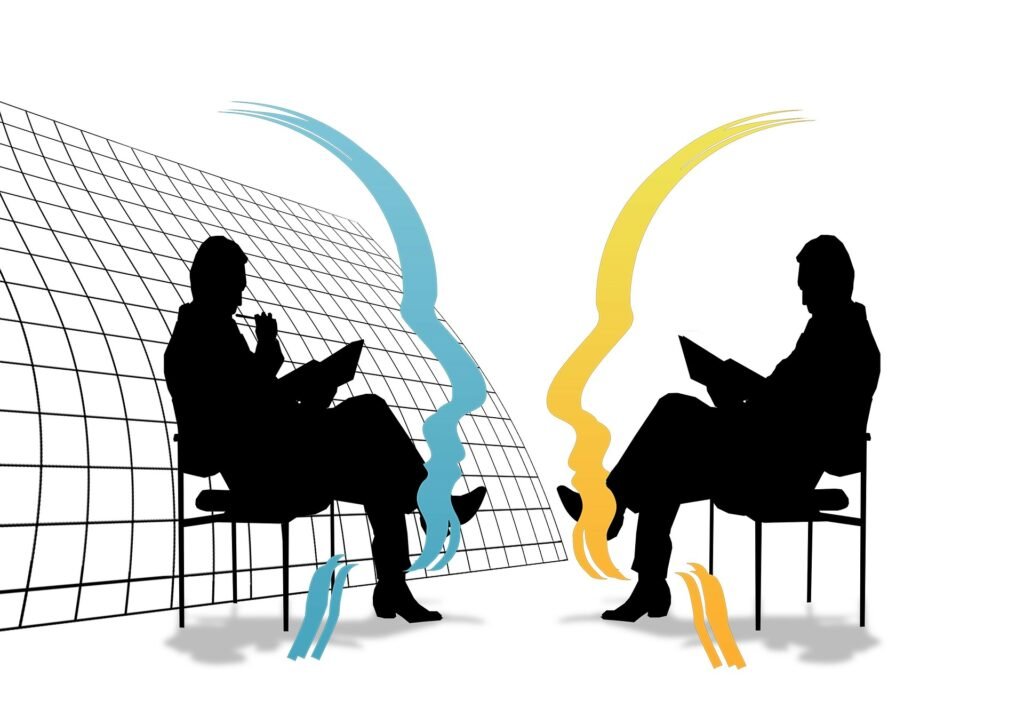Chistopher Voss is a former top hostage negotiator for the FBI. Over the course of his 20-year career, he handled various difficult cases, including a bank robbery in New York and the kidnapping of an American ambassador’s family in Ecuador. After retiring, Voss began sharing his expertise. He believes that negotiation skills are crucial because human life cannot exist without negotiation. Asking for a raise from your boss? Negotiation. Choosing a dinner spot with your partner? Negotiation. Negotiating playtime between parents and children? That requires negotiation, too. Since negotiation is inseparable from our daily lives, there is no harm in learning how to negotiate well. Especially if the knowledge comes directly from an expert.

Welcome to octavianto.com. This article discusses the five best negotiation techniques that you can practice right away.
1. TACTICAL EMPATHY
This is the most important technique and forms the foundation of all of Voss’s methods during his time at the FBI. Tactical empathy is not about being soft and nice, but quite the opposite. The essence of this technique is understanding the feelings and perspective of the person you are negotiating with. The goal is to steer the conversation in the desired direction. Typically, during negotiations, your counterpart will feel that you don’t understand their situation. Eventually, they become defensive and angry. By expressing that you understand their feelings, however, you can build trust and encourage openness.
For example, Voss once negotiated with an angry hostage taker who refused to cooperate. Rather than arguing, Voss used tactical empathy and said, “It sounds like you’re frustrated because no one is listening to you, right?” This simple sentence changed everything. After hearing it, the hostage taker finally felt understood, and the situation was under control. The question now is, how can you use this technique in everyday life? Consider the case of asking for a raise. Instead of demanding a raise right away, try using Tactical Empathy. Start the conversation with a statement like, “It seems like you’re stressed because the company’s budget for employee salaries isn’t flexible. Is that right?” This shows your boss that you understand their perspective, making them more willing to listen to your request.
2. MIRRORING
This technique is very simple. When the other person has finished speaking, simply repeat a few of their last words to encourage them to continue talking. For example, if someone says, “I need a better price,” you can respond with a question like, “A better price?” It sounds simple, but this technique is effective. Mirroring makes the other person feel truly heard. They will also be more enthusiastic about providing more information.
Voss often used this technique in his career to build good relationships with terrorists. He often obtained unexpected information that turned out to be crucial. You can use this technique when arguing with your partner. For example, if your partner says, “Since we started dating, it seems like I’m the only one who’s serious about this relationship, right?” Rather than responding defensively, say, “You’re the only one who’s serious about this relationship?” This shows that you’re listening and encourages your partner to explain what they mean. They might respond, “Yes, I try to make time for dates, but you’re always hanging out with your friends!” Now, you know why they are upset. They want you to spend more time with them. You know what to do now, and you can discuss the best solution for the future. As a note, don’t use this technique too often. Otherwise, your conversation partner will get annoyed because you sound like a robot who can only repeat words.
3. THE POWER OF THE WORD “NO”

This one might be a bit surprising. Most people think the goal of negotiating is getting the other person to say yes. But not for Voss. He believes the word “no” has much more power. Why is that? When someone says no, they feel in control. “No.” It’s safer than forcing the other person to say yes. Try asking questions that will prompt them to say no. To make it easier, let’s use an example.
Imagine that you are negotiating the renovation of your house with a contractor. You want them to start as soon as possible. Usually, you would ask, “Can you start renovating my house next week?” There’s nothing wrong with this question, but the contractor will most likely answer, “Yes.” Or, “We’ll try our best.” It’s a nice answer that will make you happy. However, the reality often turns out differently. Your home renovation gets delayed and isn’t completed on time due to various unexpected issues. Try changing your question to “Is it possible to start renovating my house next week?” The answer will almost certainly be, “No, it’s still reasonable to start renovations next week, but…” After that, the contractor will usually be more open about the potential challenges. You can then discuss these challenges further to find solutions so that your home renovation can truly begin on time.
4. THE BLACK SWAN THEORY
The Black Swan theory was popularized by Nassim Taleb in his book of the same name. In the context of negotiation, Christopher Voss refers to hidden information that can completely change the course of a negotiation when revealed. To uncover this hidden information, or “black swan,” you must be curious and patient. Ask open-ended questions and listen carefully to your conversation partner’s answers. The more you listen, the greater your chances of discovering the black swan.
In one kidnapping negotiation case, Voss had a hard time because the other party was stubborn. After stalling for time with various questions, he discovered that the decision-maker was not the person he had been talking to on the phone but rather the kidnapper’s brother. After learning this, Voss and his team employed a different strategy and peacefully resolved the case. This technique is most useful when you are in a difficult situation. For example, imagine you are negotiating a business deal, but the other party is stubborn. Rather than forcing them to accept your proposal, ask questions that reveal their hidden concerns. You could ask a simple question like, “What concerns you about this proposal?” You may discover unexpected factors, such as budget issues, time constraints, or personal reasons. Once you know what they are, you can immediately think of solutions to keep the negotiation process smooth.
5. ACCUSATIONS AUDIT

The last technique is self-awareness, also known as a blame audit. It is a technique in which you mention the negative things that others think about you. What does that mean? For instance, when negotiating a pay raise with your boss, you could begin the conversation by saying, “You might think I’m a demanding person.” This is an example of using the blame audit technique. In simpler terms, we are putting ourselves down to lighten the mood. The accusation audit technique is highly effective for two reasons. First, we appear self-aware to the other person. They see us as humble because we acknowledge our weaknesses. Second, this audit can resolve conflicts before they begin. Since we have already acknowledged our weaknesses, our negotiation counterpart has no grounds for protest. Ultimately, this leads to a beneficial process for us. The key to the accusatory audit technique is to be honest and specific. The goal is to predict the other person’s negative thoughts. The more specific and accurate you are, the more effective the technique will be.
These are the five powerful negotiation techniques from the former top FBI agent. These techniques are not just theory; they have been tested in various situations. They have been used in everything from life-or-death negotiations with terrorists to asking for a raise from a tough boss to haggling over goods or services. Now that you understand the principles, it’s your turn to try them out! Start by choosing one technique, applying it for a week, and observing the results. If you want to learn more, read the book Never Split the Difference. If you found this article helpful, please share it with your friends or anyone else who might find it useful.
Disclaimer
The information provided on this website, including but not limited to articles about technology, finance, stock markets, investment, business, self-development, trading, sales & marketing, music, and other related topics, is intended solely for general informational and educational purposes. While every effort is made to ensure the accuracy and reliability of the content, neither the website nor its authors make any warranties or representations regarding the completeness, accuracy, or suitability of the content for any specific purpose.
The contents of this website do not constitute professional, financial, investment, legal, or other expert advice. Readers are advised to consult with suitably qualified professionals regarding specific issues or decisions. Any reliance placed on such information is strictly at your own risk.
Neither the website nor its owners, authors, or affiliates shall be held responsible or liable for any loss or damage—direct or indirect—that may arise from the use of, or reliance on, information provided herein. Past performance in financial markets or business is not indicative of future results. The website may include links to third-party websites for your convenience; however, we do not endorse or take responsibility for the content or accuracy of external sites.
By using this website, you agree to assume full responsibility for any actions taken based on the information presented, and acknowledge that the website expressly disclaims all liability to the maximum extent permitted by law.


Christopher Voss’s insights on negotiation are truly eye-opening. His emphasis on tactical empathy highlights the importance of understanding others’ perspectives to build trust. It’s fascinating how a simple acknowledgment of someone’s feelings can completely shift the dynamics of a conversation. This technique seems invaluable not just in high-stakes situations but also in everyday interactions. How can we practice tactical empathy effectively in our daily lives to improve our relationships? Given the growing economic instability due to the events in the Middle East, many businesses are looking for guaranteed fast and secure payment solutions. Recently, I came across LiberSave (LS) — they promise instant bank transfers with no chargebacks or card verification. It says integration takes 5 minutes and is already being tested in Israel and the UAE. Has anyone actually checked how this works in crisis conditions?